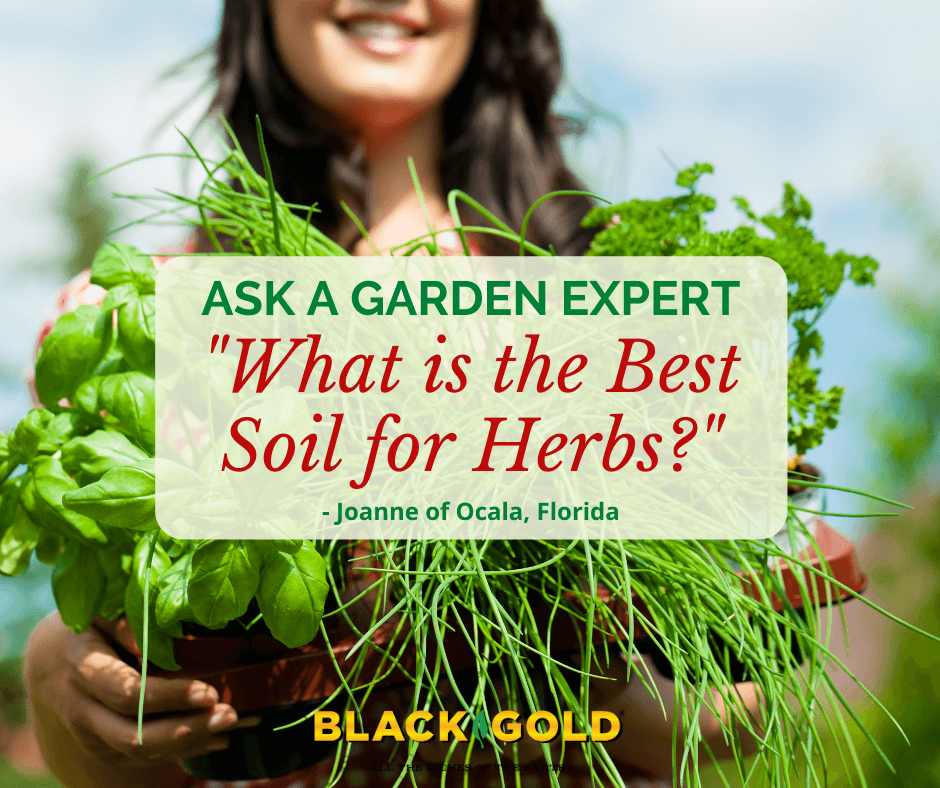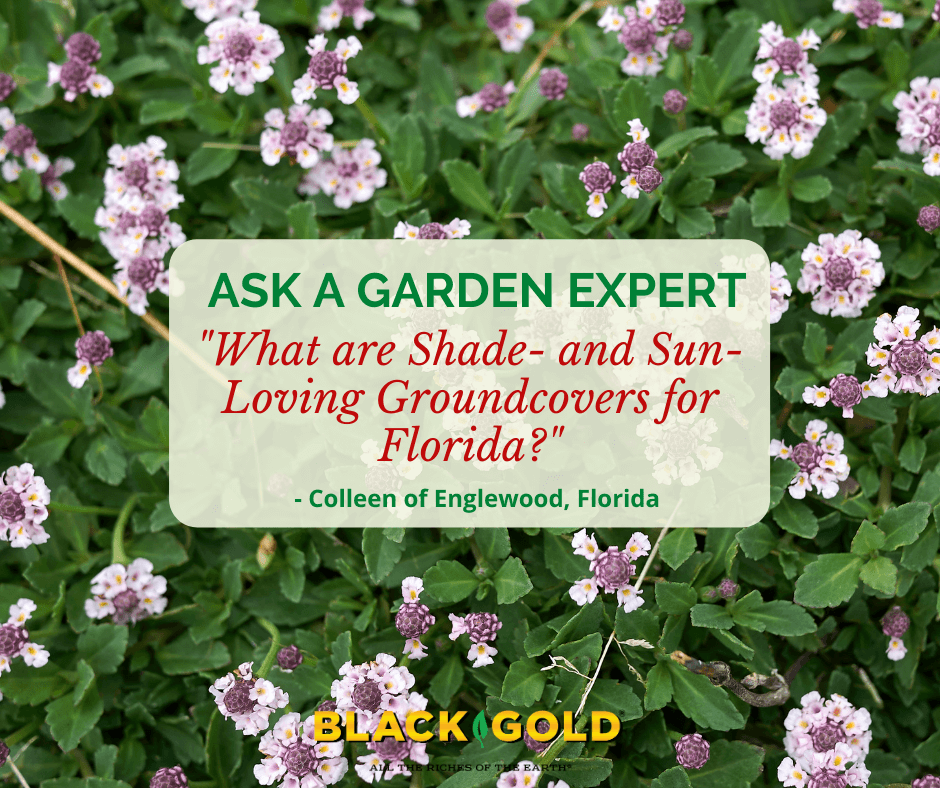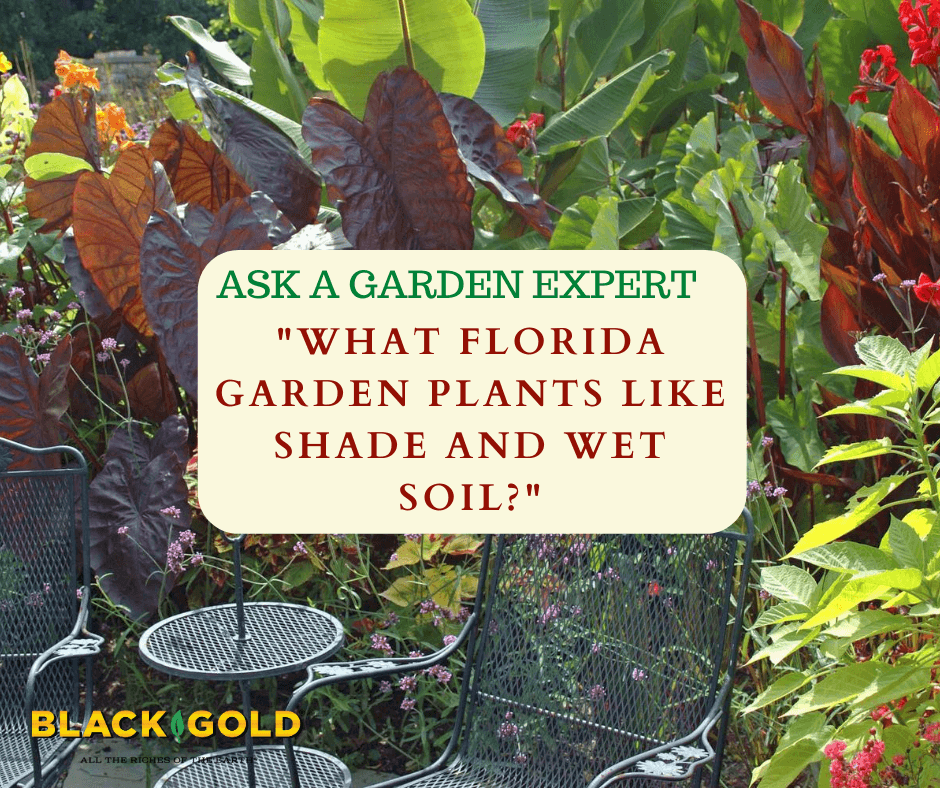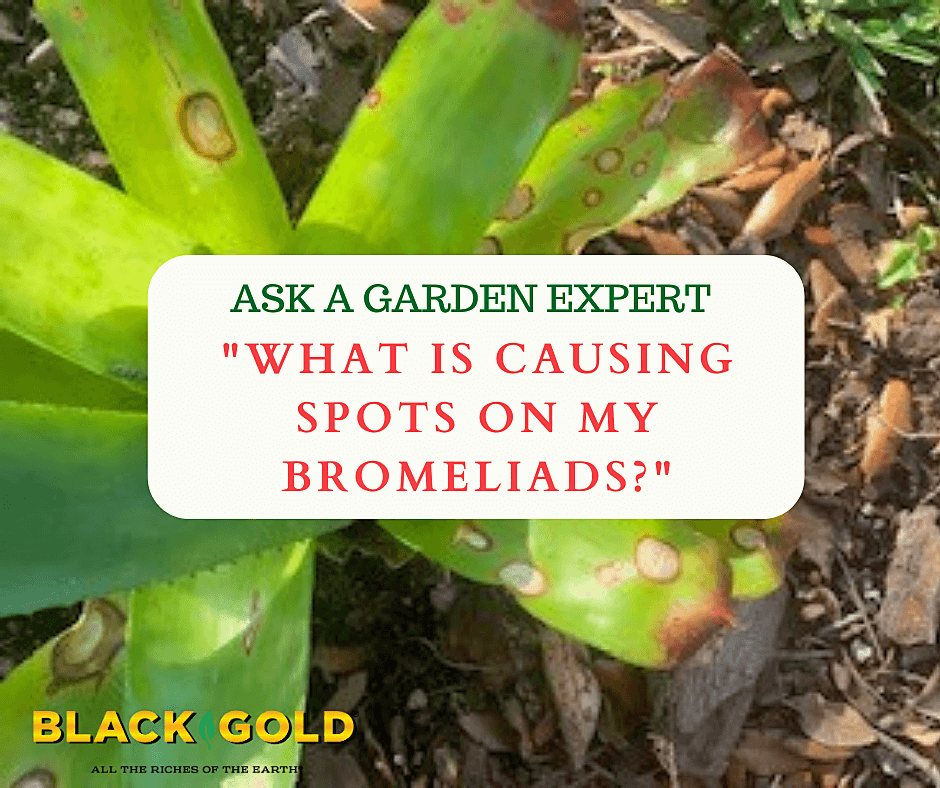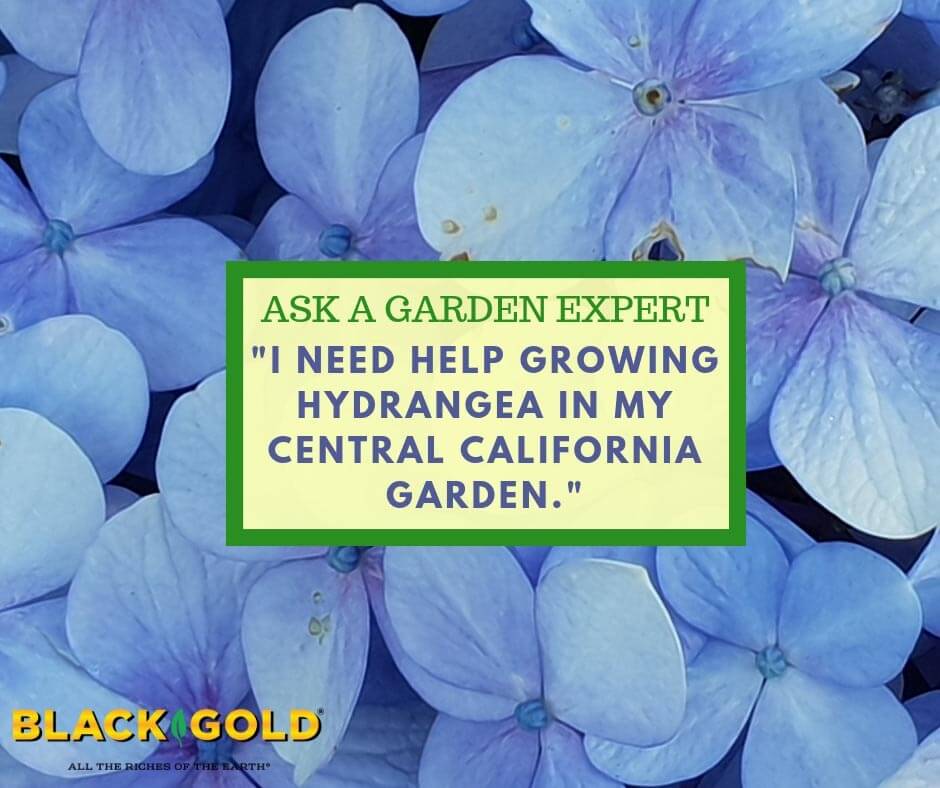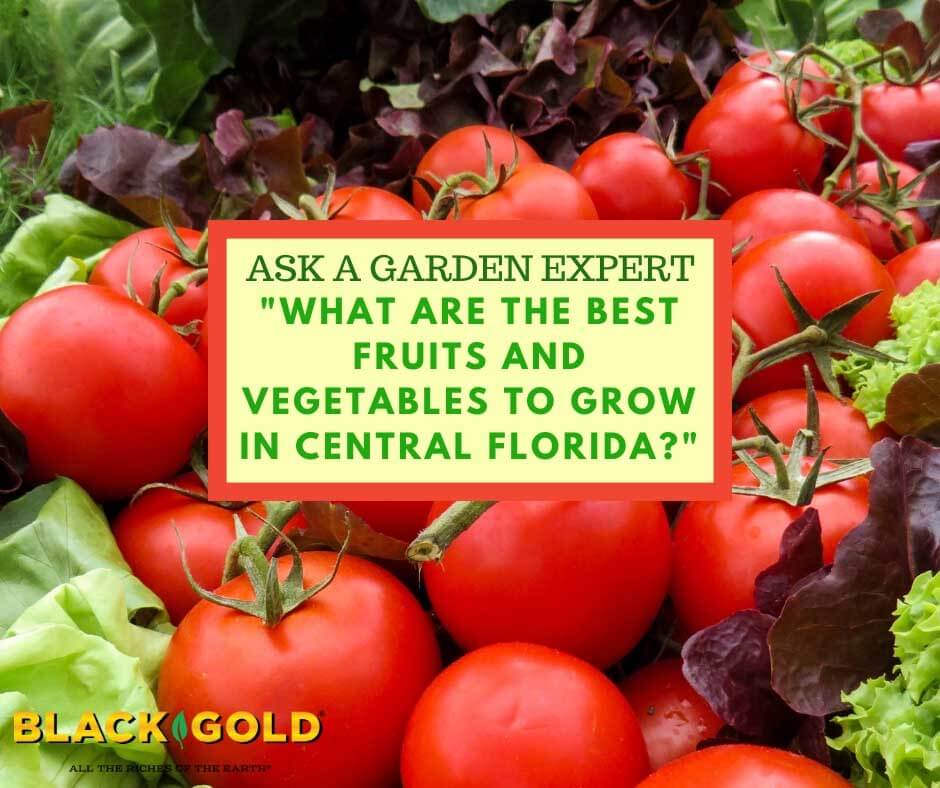“What is the best soil to use when planting a container herb garden?” Question from Joanne of Ocala, Florida
Answer: You are in luck! Herbs are some of the easiest plants you can grow, if given the right growing conditions–soil included. Almost all herbs require full sun, fertile soil with good drainage, and average water. Some are perennials (meaning they will survive the winter and grow each year) and others are annuals (meaning they will survive just one growing season and die). All are very easy to harvest. Just clip the leaves as you need them, while being sure to leave enough to keep the plant full and healthy.
Soil for Herbs
At planting time, be sure to give them good soil that holds water well, is porous and fertile and drains well. If planting them in pots, they grow best in Black Gold Natural & Organic Potting Mix, which is approved for organic gardening. Sometimes it helps to add extra Black Gold Perlite for added drainage. If eventually want to grow them in the ground, plant them in a prepared, weed-free garden, and work some Black Gold Garden Compost Blend into the soil to ensure that they perform really well. After your herbs have been initially planted, water them every other day to help them become established. After a couple of weeks, you can water garden-grown plants less unless the ground becomes very dry. Potted herbs will need to be watered every other day or even daily if the weather is very hot and windy. Add a slow-release fertilizer at the beginning of the season to ensure that they grow their best. (Click here for more information about essential culinary herbs.)
Happy gardening!
Jessie Keith
Black Gold Horticulturist

